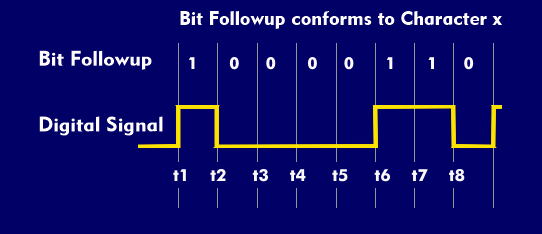pulse code modulation (PCM)
Pulse code modulation( PCM) is a commonly used digital representation for analog audio signals. This type of modulation has been standardized by the International Telecommunication Union( ITU) under ITU Recommendation G.711 for the digitization ofspeech.
Pulse code modulation is a relatively simple coding that characterizes only two states: 0 and 1. The modulation signal is represented with these two states. The states are coupled to a clock signal and the state sequence or bit sequence corresponds to a digit, character or letter.
In this type of modulation, discrete-time analog signals are converted into discrete-time and discrete-value binary signals by quantization. Individual characters can be assigned to each individual state, as previously described, but also entire code words of defined length.
In speech transmission, the PCM technique is used to convert an analog speech signal into a digital signal, based on Nyquist's sampling theorem. To do this, the analog signal is sampled 8,000 times per second and converted to an 8-bit value, producing a sample every 125 µs. The resulting transmission speed is 64 kbit/s, and the transmittable speech frequency is 4 kHz.
To make the speech dynamic, the International Telecommunication Union (ITU) has defined two procedures for dynamic compression in G.711: the µ-law procedure and the A-law procedure.


